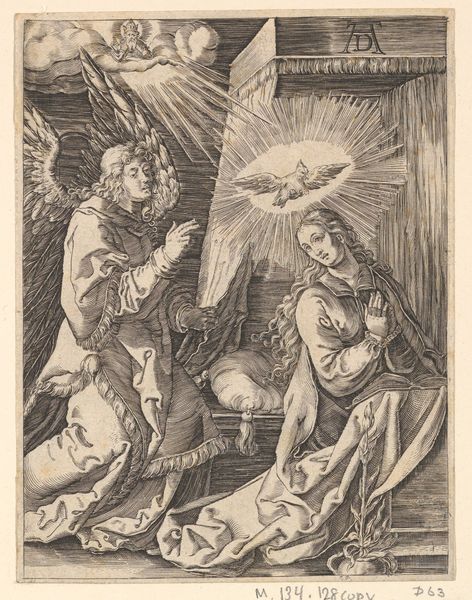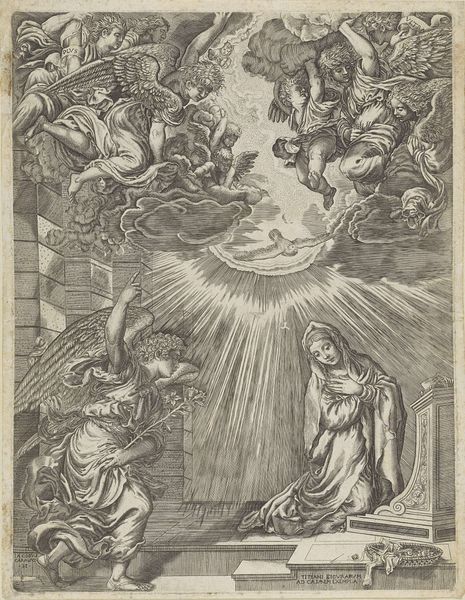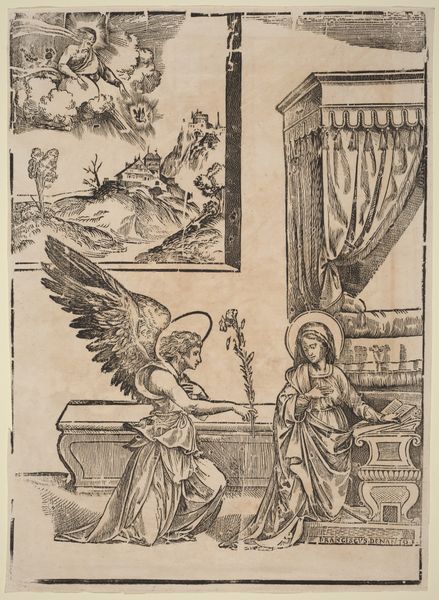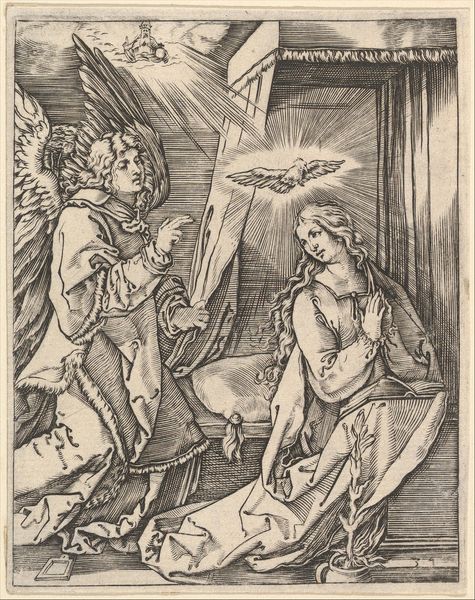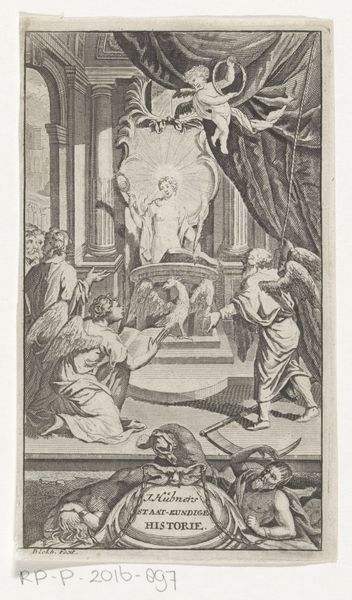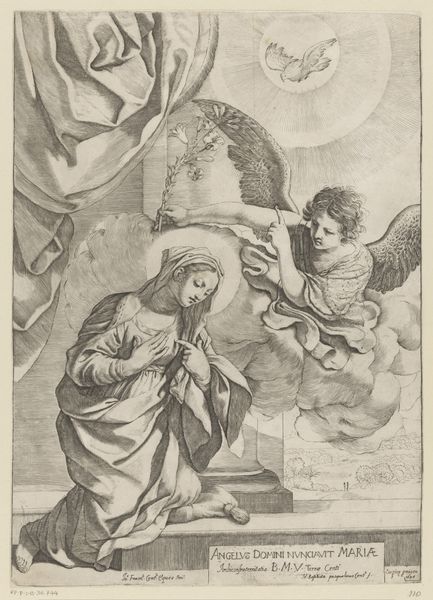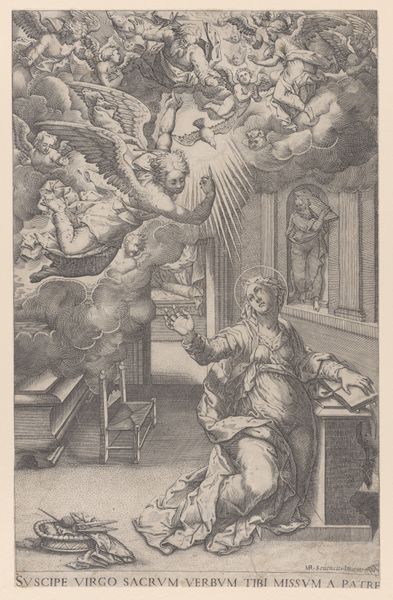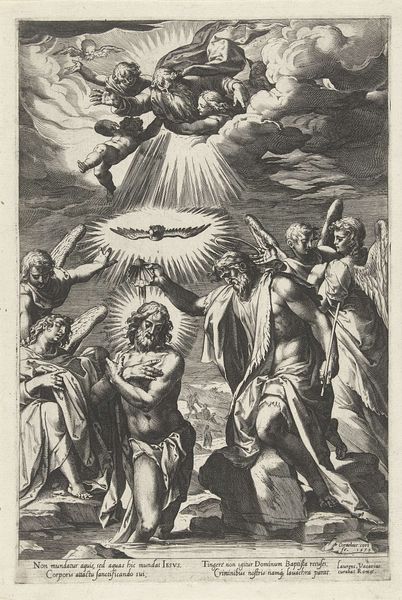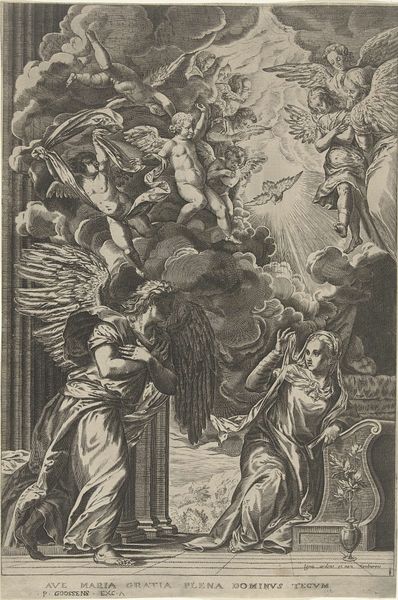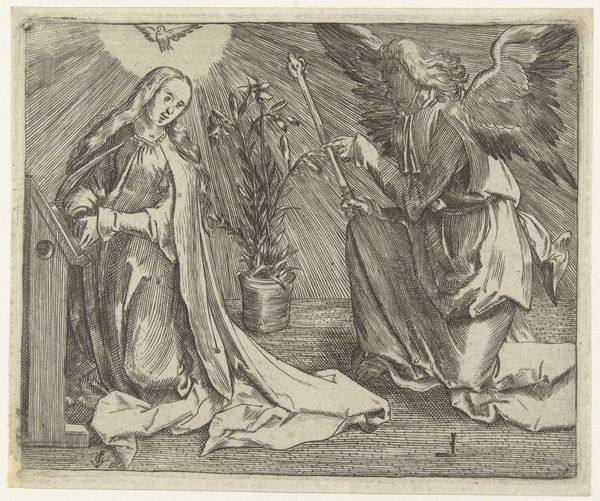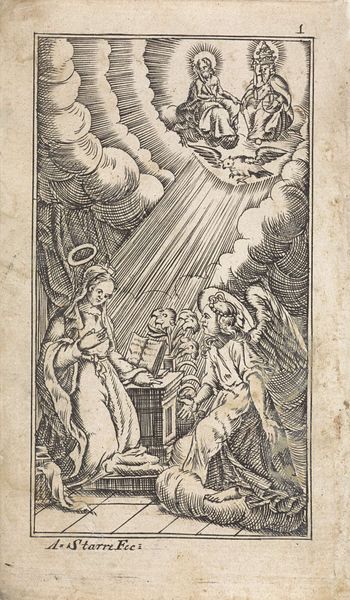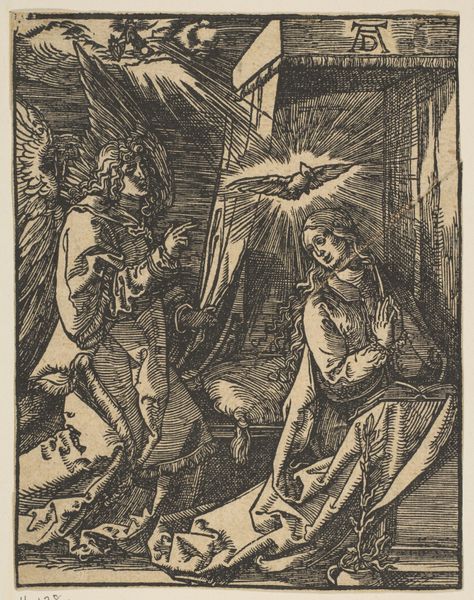
#
comic strip sketch
#
pen illustration
#
pen sketch
#
junji ito style
#
cartoon sketch
#
personal sketchbook
#
pen-ink sketch
#
sketchbook drawing
#
storyboard and sketchbook work
#
sketchbook art
Dimensions: height 281 mm, width 210 mm
Copyright: Rijks Museum: Open Domain
Curator: Here we have Cornelis Cort’s "Annunciation," created in 1602. What strikes you initially about this piece? Editor: The overwhelming use of line creates such a vibrant texture. The density varies dramatically, almost to the point of feeling tactile. And yet, it's contained entirely within this monochrome scheme. The visual energy is incredible! Curator: Cort created this engraving during a period of intense religious and political upheaval. The artistic interpretation of the Annunciation was heavily influenced by the Counter-Reformation, which emphasized the divine and the miraculous. What do you think this work contributes to that era? Editor: The light—sourced both from the Holy Spirit dove and a God figure surrounded by what appears to be clouds, perhaps divine light filtering into the Virgin’s chamber—creates a verticality that emphasizes the grace and power descending upon Mary. Also the Virgin is small compared to the Archangel which suggests she is the recipient. Curator: The architecture itself is curious—the stark geometry against the billowing robes, the angel's stance almost appearing mid-stride into the scene, contrasting her stillness in prayer. These stylistic elements tell us much about the conventions of the period, even reflecting the tastes of his patrons. Do you find any particularly successful formal devices used here? Editor: For me, it's the treatment of space. Notice the way the folds of the fabric almost mimic the clouds above? Cort creates an ethereal quality that defies the rigidity often associated with engravings. He finds balance through contrast; even with dense linear marks throughout the engraving, no specific detail overcrowds the other. Curator: This print, therefore, provides insights into the intersection of art, religion, and politics in early 17th-century Europe, and more particularly the role of the Roman Catholic Church in art and in influencing artistic messaging for popular dissemination, something Cornelis Cort was heavily engaged in at the time. Editor: I agree entirely, especially given the work’s intricate design that nonetheless feels so remarkably lively! Cort is successful in drawing the eye in through this simple moment in time in the Annunciation scene.
Comments
No comments
Be the first to comment and join the conversation on the ultimate creative platform.
